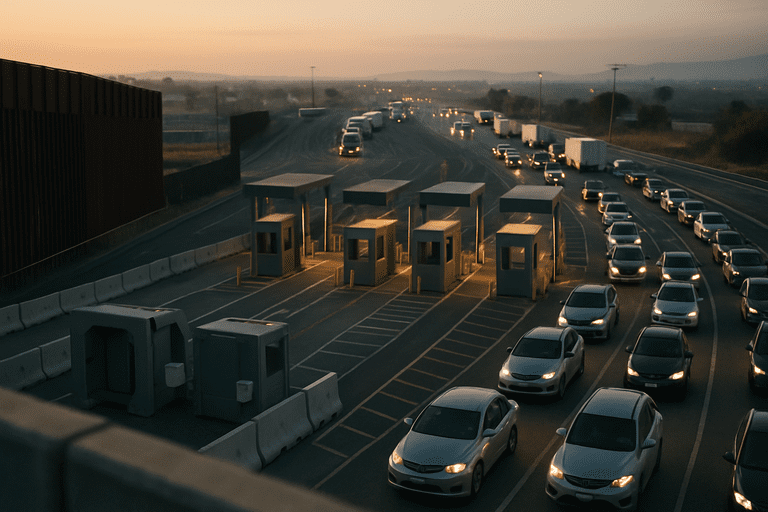🎧 Listen to the summary:
The administration’s package strengthens border security through large, focused investments in barriers, staffing, and screening technology, a straightforward approach that prioritizes physical control and faster processing at ports of entry.
The legislative core directs more than $70 billion over four years to U.S. Customs and Border Protection, including roughly $46.55 billion for construction and related barrier attributes, billions for new facilities, hiring and retention bonuses for agents, and billions more for technology and a biometric entry‑exit system. These provisions create concrete procurement and construction timelines and authorize expanded short‑term detention capacity and screening at ports.
Implementation combines congressional appropriations, executive orders, and administrative waivers. A presidential proclamation framing unauthorized migration as an “invasion” has been used to justify sweeping entry restrictions and to task DHS, State, and Justice with accelerated repatriation and removal operations, while DHS has issued waivers to speed construction by suspending environmental reviews in selected segments. Military support and National Defense Areas augment CBP operations in several sectors. fileciteturn0file18turn0file8
Ports of entry face parallel expansion of screening and interdiction resources. Reporting shows most large‑scale fentanyl seizures occur at ports, and the policy shifts funding and personnel toward intensified vehicle inspections, non‑intrusive inspection equipment, and expanded asylum processing controls, including app‑based appointment systems and expedited removal authorities. fileciteturn0file8turn0file4
Documented trade‑offs include reallocating funds toward walls while technology, surveillance, and port staffing sometimes face competing priorities, an arrangement previously criticized when wall funding displaced other proven measures. Smuggling tactics already adapt to barriers, with tunnels and port concealment persisting as enforcement pivots. State efforts to build barriers or criminalize crossings add legal friction with federal authority. fileciteturn0file7turn0file19turn0file6
New bureaucratic processes include nationwide expedited removal, daily arrest targets, expanded 287(g) agreements with local police, and centralized biometric systems that increase interagency data flows and procurement demands. Foreseeable inefficiencies include rapid hiring surges, backlogs in asylum and immigration courts, and environmental and land‑use disputes. fileciteturn0file2turn0file13
Oversight will largely fall to federal courts, congressional appropriations and hearings, and administrative reviews tied to environmental and procurement law as projects move from planning to construction. Litigation and congressional scrutiny are already shaping implementation timetables. fileciteturn0file11turn0file12
—
Lisa Grant reports on immigration enforcement, border operations, and national security protocols. She studied political science at Arizona State University and previously worked as a legislative staffer on immigration reform. Her reporting brings a field-level understanding of border policy and how it is applied in communities across the Southwest.



